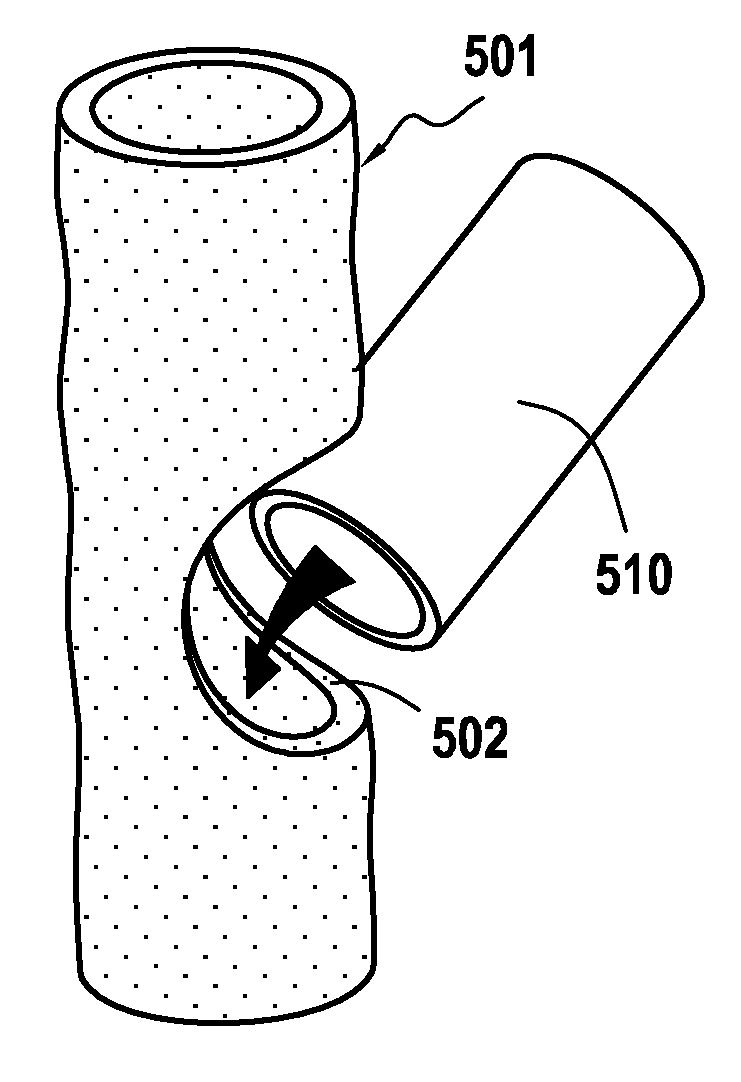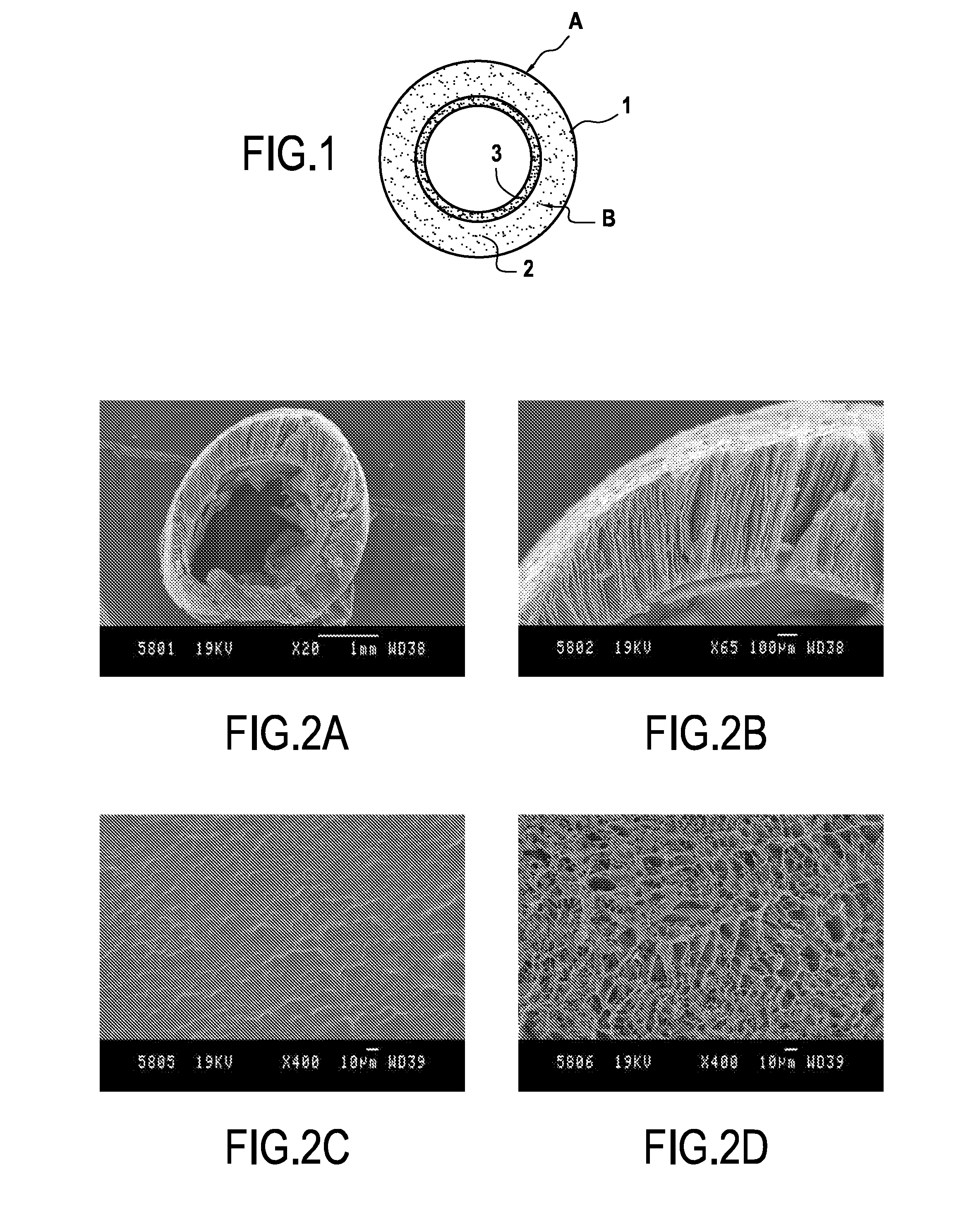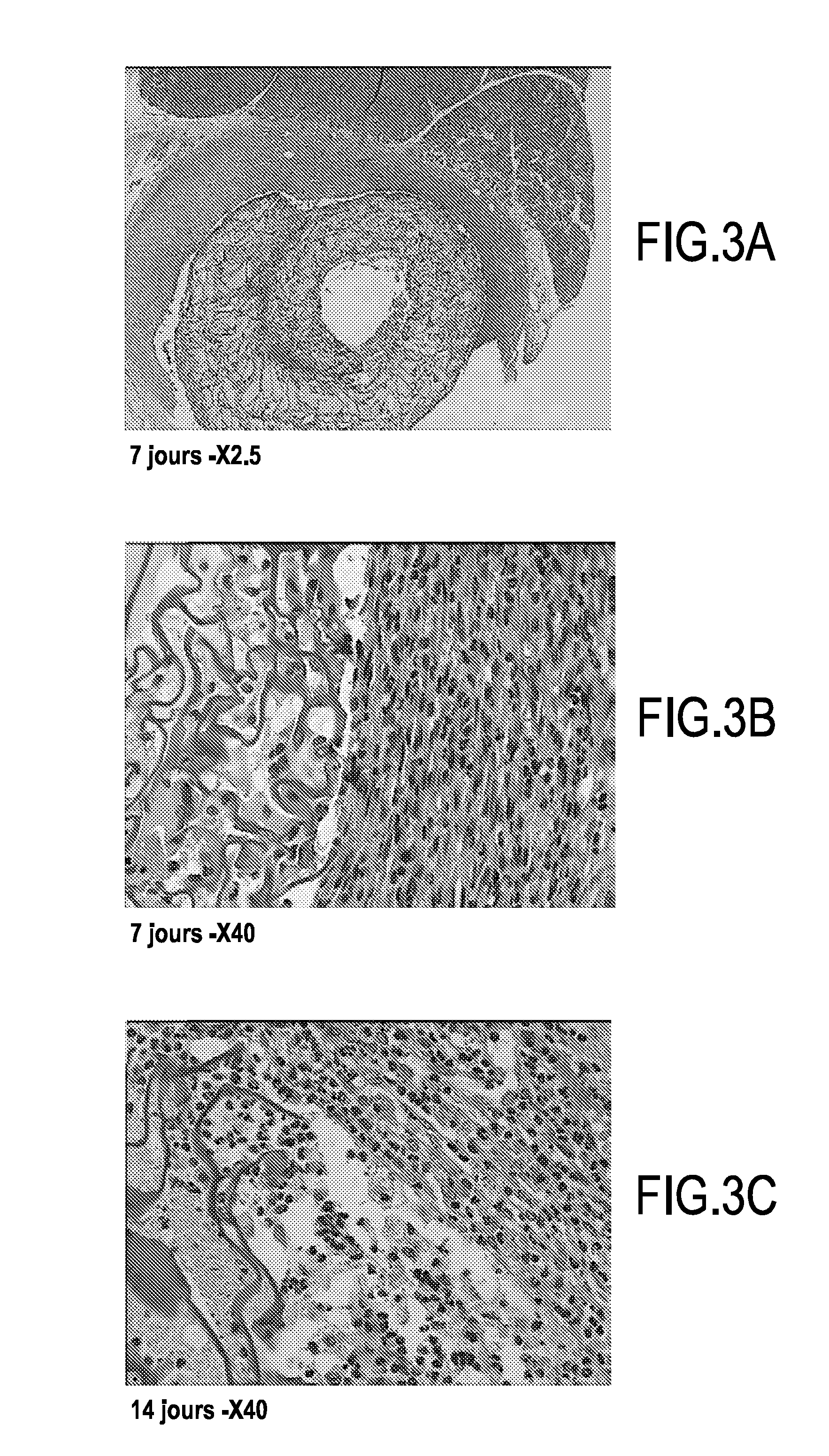Prosthesis for promoting the in vivo reconstruction of a hollow organ or a portion of a hollow organ
- Summary
- Abstract
- Description
- Claims
- Application Information
AI Technical Summary
Benefits of technology
Problems solved by technology
Method used
Image
Examples
second embodiment
the biological material is added to the support member just before resection to avoid a step of culturing of the biological material.
third embodiment
the biodegradable tubular support member is implanted without biological material. The support member is then colonized by the host cells.
fourth embodiment
the tubular support member is produced as two physically independent and separate (that is to say independently manipulable) parts, a first part comprising the porous layer, and the second part comprising the essentially non-porous layer. Within this context, the non-porous layer is placed on the inside of the hollow tubular organ to be reconstructed, then the porous layer is placed on the outside of this organ.
These embodiments make it possible, in particular, to avoid in vitro seeding and cell culturing conditions, but also enables a saving in time and in production costs. On the other hand, it is not necessary to constitute a cell bank. In these advantageous embodiments, the prosthesis is intended for an in viva incorporation of the material of living biological origin. The cell colonization carried out in vivo is very good and the reconstruction of the portion or all of the organ replaced is permitted.
The biological material of human origin may be of cell origin (excluding embry...
PUM
| Property | Measurement | Unit |
|---|---|---|
| Diameter | aaaaa | aaaaa |
| Thickness | aaaaa | aaaaa |
| Diameter | aaaaa | aaaaa |
Abstract
Description
Claims
Application Information
 Login to View More
Login to View More - R&D
- Intellectual Property
- Life Sciences
- Materials
- Tech Scout
- Unparalleled Data Quality
- Higher Quality Content
- 60% Fewer Hallucinations
Browse by: Latest US Patents, China's latest patents, Technical Efficacy Thesaurus, Application Domain, Technology Topic, Popular Technical Reports.
© 2025 PatSnap. All rights reserved.Legal|Privacy policy|Modern Slavery Act Transparency Statement|Sitemap|About US| Contact US: help@patsnap.com



